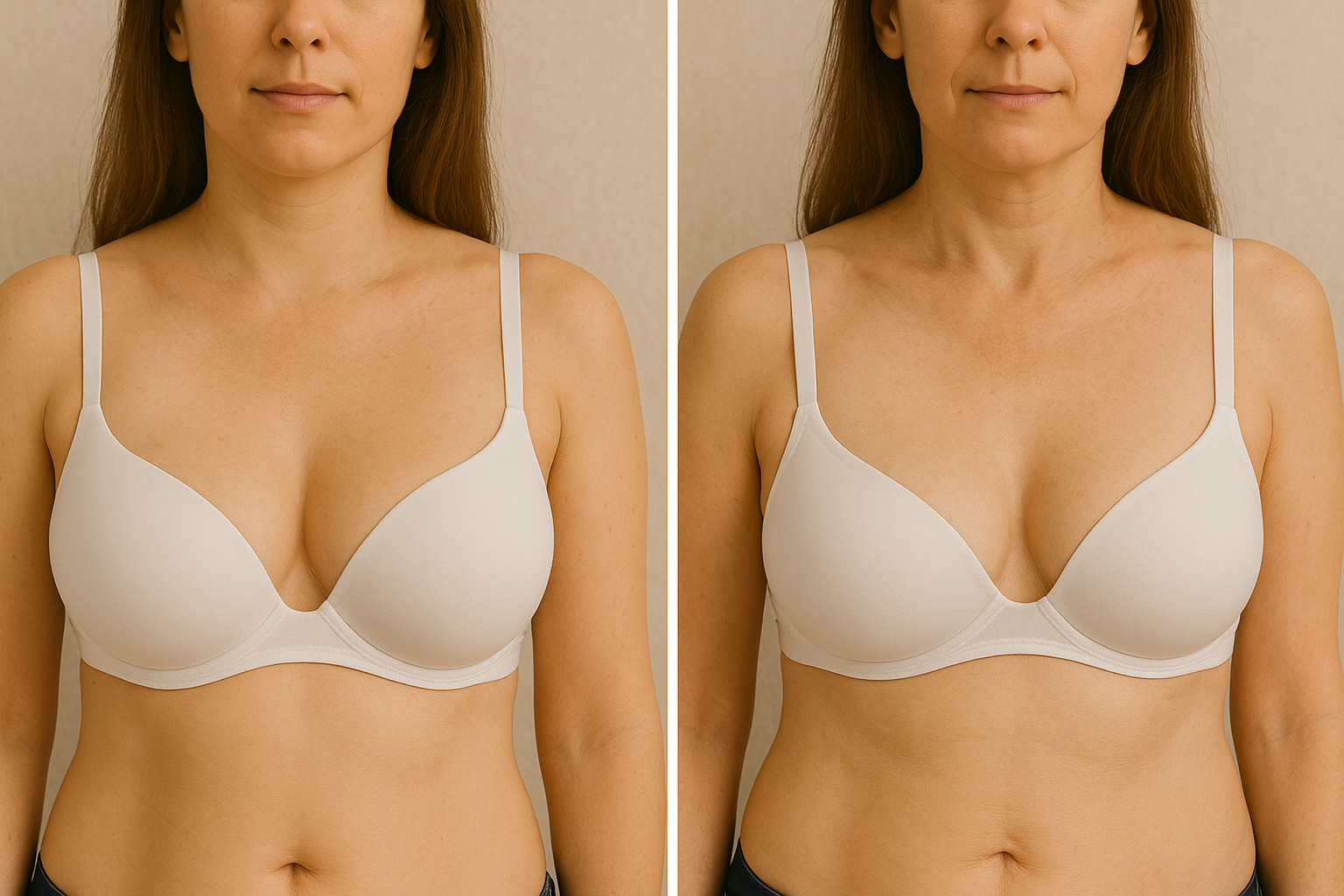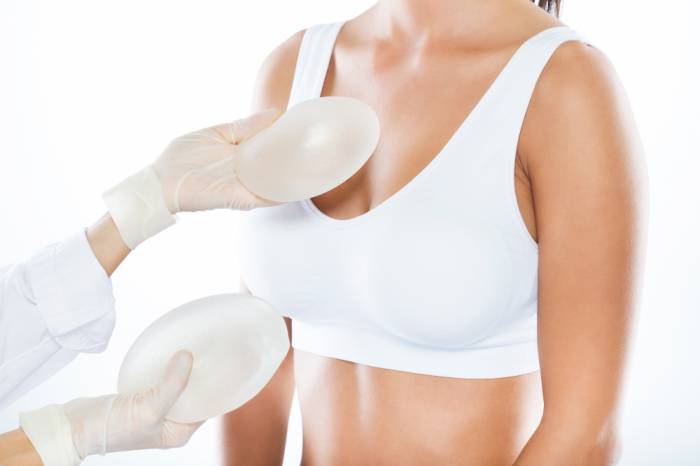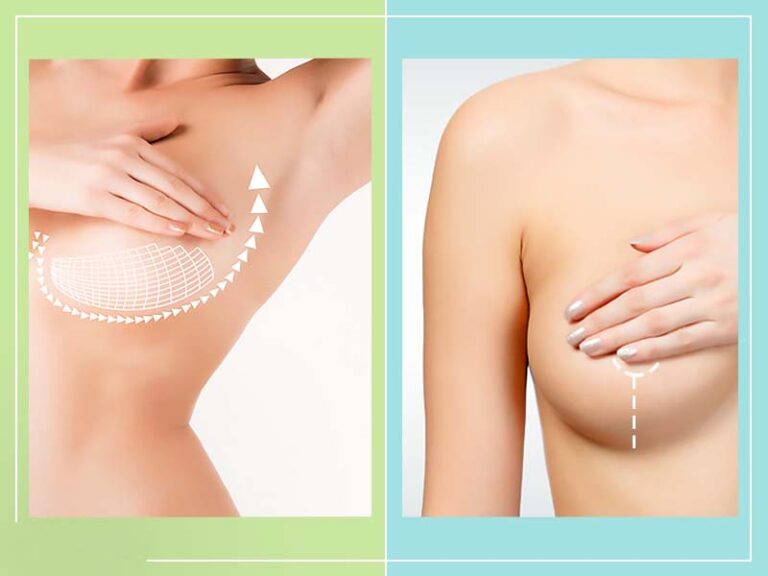Breast fat transfer, also known as autologous fat grafting, is a cosmetic procedure where fat is harvested from one part of the body and injected into the breasts. This technique offers a natural alternative to implants, appealing to those seeking subtle enhancement without foreign materials.
In this article, we will explore what to expect from breast fat transfer after five years, including changes in volume, common experiences, and long-term results.
Breast Fat Transfer After 5 Years
Changes in Volume and Shape Over Time
Over the years, the volume and shape of the breasts can change due to the natural settling of fat cells. Initially, some fat may be reabsorbed by the body, but the remaining cells typically integrate well, providing a natural look. Patients often notice a more stable breast size after the first year, with subtle changes continuing over time.
- Initial fat reabsorption is common.
- The remaining fat cells integrate and stabilize.
- Subtle changes may occur over the years.
Natural Settling of Fat Cells
The natural settling of fat cells is a crucial aspect of breast fat transfer. After the procedure, the body gradually accepts the transferred fat, leading to a more natural appearance. This process can take several months, with the most significant changes occurring within the first year.
Book A Consultation With Dr Tarek Bayazid
Installment Plan Available
- Fat cells settle naturally over time.
- The body gradually accepts the transferred fat.
- Most changes occur within the first year.
Common Patient Experiences After Five Years
Many patients report satisfaction with their breast fat transfer results after five years. The breasts often feel natural and maintain a consistent shape. However, individual experiences can vary based on factors like lifestyle and genetics.
- Satisfaction with results is common.
- Breasts maintain a natural feel and shape.
- Experiences vary based on lifestyle and genetics.
How Much Fat Survives After 5 Years?
The survival rate of transferred fat is a key concern for many patients. Typically, 50-70% of the transferred fat survives after five years. This percentage can vary based on factors such as the surgeon’s technique and the patient’s lifestyle.
- 50-70% of transferred fat typically survives.
- The survival rate depends on technique and lifestyle.
- Long-term results are generally stable.
Signs of a Successful Breast Fat Transfer
A successful breast fat transfer is characterized by natural-looking results and minimal complications. Patients should experience a stable breast size and shape, with no significant asymmetry or irregularities.
- Natural-looking results indicate success.
- Stable breast size and shape are key signs.
- Minimal complications suggest a positive outcome.
Possible Complications or Concerns Over Time
While breast fat transfer is generally safe, some complications can arise over time. These may include fat necrosis, cysts, or changes in breast symmetry. Regular follow-ups with a healthcare provider can help address these concerns.
- Fat necrosis and cysts are potential complications.
- Changes in symmetry may occur.
- Regular follow-ups are important for monitoring.
When to Consider a Touch-Up Procedure
A touch-up procedure may be necessary if significant volume loss occurs or if the patient desires further enhancement. This decision should be made in consultation with a qualified surgeon.
- Consider touch-ups for significant volume loss.
- Further enhancement may require additional procedures.
- Consult with a qualified surgeon for advice.
How Breasts Look and Feel After 5 Years
After five years, breasts typically look and feel natural, with a soft texture similar to natural breast tissue. The results are often long-lasting, providing patients with a sense of satisfaction and confidence.
- Breasts look and feel natural after five years.
- Soft texture similar to natural tissue.
- Long-lasting results provide satisfaction.
Breast Fat Transfer Results Timeline – 1 Year vs. 5 Years
Key Changes from Initial Procedure to Long-Term Results
The first year after breast fat transfer is crucial for observing changes. Initial swelling subsides, and the final shape begins to emerge. By five years, the results are generally stable, with minimal changes.
- Initial swelling subsides within the first year.
- The final shape emerges over time.
- Results stabilized by five years.
What to Expect at 1 Year vs. 5 Years Post-Op
At one year post-op, patients can expect a more defined breast shape, with most swelling resolved. By five years, the breasts should maintain their shape and volume, with any changes being subtle.
- Defined shape at one year post-op.
- The swelling mostly resolved by one year.
- Stable shape and volume by five years.
Fat Survival Rate in the First Year
The first year is critical for fat survival, with the body reabsorbing some of the transferred fat. Typically, 60-80% of the fat survives this period, contributing to the final results.
- 60-80% of fat survives the first year.
- Initial reabsorption is common.
- Contributes to long-term results.
Body Weight and Lifestyle Impact Over the Years
Body weight and lifestyle choices significantly impact the longevity of breast fat transfer results. Maintaining a stable weight and healthy lifestyle can enhance fat retention and overall satisfaction.
- A stable weight enhances fat retention.
- Healthy lifestyle choices are crucial.
- Significant weight changes can affect results.
When to Expect Final Results
Final results from breast fat transfer are typically visible within one year, with the most significant changes occurring in the first few months. By five years, the results are generally stable and long-lasting.
- Final results are visible within one year.
- Significant changes occur in the first few months.
- Stable and long-lasting results by five years.
Tips for Ensuring Long-Lasting Fat Transfer Results
Steps to Maintain Results for the Long Term
Maintaining long-lasting results requires a combination of healthy lifestyle choices and proper post-op care. Patients should focus on diet, exercise, and regular follow-ups with their surgeon.
- Healthy lifestyle choices are essential.
- Proper post-op care is crucial.
- Regular follow-ups with the surgeon are recommended.
Importance of Stable Body Weight
A stable body weight is vital for maintaining breast fat transfer results. Significant weight fluctuations can affect the size and shape of the breasts, impacting overall satisfaction.
- Stable weight is vital for maintaining results.
- Weight fluctuations can affect breast size.
- Consistent weight enhances satisfaction.
How Exercise Affects Transferred Fat
Exercise plays a role in maintaining breast fat transfer results. While regular physical activity is beneficial, excessive exercise can lead to fat loss, affecting the transferred fat.
- Regular exercise is beneficial.
- Excessive exercise can lead to fat loss.
- Balance is key for maintaining results.
The Role of Hormonal Changes on Fat Retention
Hormonal changes, such as those during menopause, can impact fat retention. Patients should be aware of these changes and discuss any concerns with their healthcare provider.
- Hormonal changes can impact fat retention.
- Menopause may affect breast volume.
- Discuss concerns with a healthcare provider.
Skincare and Massage for Post-Surgical Care
Skincare and massage can aid in post-surgical recovery and enhance results. Gentle massage helps distribute fat evenly, while proper skincare maintains skin elasticity.
- Skincare and massage aid recovery.
- Gentle massage distributes fat evenly.
- Proper skincare maintains elasticity.
Breast Fat Transfer vs. Implants – Which Lasts Longer?
Comparing Longevity, Risks, and Benefits
Breast fat transfer and implants each have unique longevity, risks, and benefits. Fat transfer offers a natural look with fewer risks, while implants provide more dramatic results but may require replacement.
- Fat transfer offers a natural look.
- Implants provide dramatic results.
- Each option has unique risks and benefits.
Why Some People Prefer Implants Over Fat Transfer and Vice Versa
Preferences for implants or fat transfer vary based on individual goals and concerns. Some prefer the natural feel of fat transfer, while others seek the volume and shape provided by implants.
- Preferences vary based on individual goals.
- Fat transfer offers a natural feel.
- Implants provide volume and shape.
Fat Transfer vs. Implants – Natural Aging Differences
Natural aging affects fat transfer and implants differently. Fat transfer ages naturally with the body, while implants may require replacement or adjustment over time.
- Fat transfer ages naturally with the body.
- Implants may require replacement.
- Aging affects each option differently.
Maintenance and Follow-Up Needs
Both breast fat transfer and implants require maintenance and follow-up care. Regular check-ups ensure optimal results and address any concerns that may arise.
- Maintenance is required for both options.
- Regular check-ups ensure optimal results.
- Follow-up care addresses concerns.
Which Option Provides a More Natural Look?
Breast fat transfer typically provides a more natural look and feel compared to implants. The use of the patient’s own fat allows for a seamless integration with existing breast tissue.
- Fat transfer provides a natural look and feel.
- Implants offer more dramatic changes.
- Natural integration with existing tissue.
Impact of Weight Fluctuations on Both Procedures
Weight fluctuations can impact both breast fat transfer and implants. While fat transfer results may change with weight, implants remain unaffected by body weight changes.
- Weight fluctuations impact fat transfer results.
- Implants remain unaffected by weight changes.
- Consider weight stability for optimal results.
Factors That Influence Breast Fat Transfer Results
Key Elements Affecting Fat Retention and Overall Appearance
Several factors influence the success of breast fat transfer, including genetics, lifestyle, and the surgeon’s technique. Understanding these elements can help patients achieve optimal results.
- Genetics and lifestyle influence success.
- The surgeon’s technique is crucial.
- Understanding factors aids in achieving results.
Genetics and Individual Fat Distribution
Genetics plays a significant role in fat retention and distribution. Patients with favorable genetic factors may experience better long-term results from breast fat transfer.
- Genetics influence fat retention.
- Individual distribution affects results.
- Favorable genetics enhance outcomes.
Surgeon’s Technique and Experience
The surgeon’s technique and experience are critical for successful breast fat transfer. Choosing a skilled and experienced surgeon can significantly impact the procedure’s outcome.
- Technique and experience are critical.
- Skilled surgeons enhance success.
- Choose experienced professionals for optimal results.
The Impact of Smoking and Alcohol on Fat Grafting
Smoking and alcohol consumption can negatively affect fat grafting results. These habits may impair healing and reduce fat retention, impacting overall satisfaction.
- Smoking and alcohol affect results.
- Impaired healing reduces fat retention.
- Avoid these habits for optimal outcomes.
Best Practices for Healing and Recovery
Following best practices for healing and recovery is essential for successful breast fat transfer. Patients should adhere to post-op instructions and maintain a healthy lifestyle.
- Adhere to post-op instructions.
- Maintain a healthy lifestyle.
- Best practices enhance recovery.
How Aging Affects Transferred Fat Cells Over Time
Natural Body Changes and Their Effects on Fat Grafting
Aging naturally affects transferred fat cells, leading to changes in breast volume and shape. Understanding these changes can help patients manage expectations and maintain satisfaction.
- Aging affects transferred fat cells.
- Changes in volume and shape occur.
- Manage expectations for satisfaction.
Skin Elasticity and Breast Volume Over the Years
Skin elasticity decreases with age, impacting breast volume and shape. Maintaining skin health can help preserve the results of breast fat transfer.
- Decreased elasticity affects volume.
- Skin health preserves results.
- Aging impacts breast shape.
The Role of Metabolism in Fat Retention
Metabolism plays a role in fat retention, with slower metabolism potentially leading to better fat survival. Patients should be aware of their metabolic rate and its impact on results.
- Metabolism affects fat retention.
- A slower metabolism may enhance survival.
- Awareness aids in managing results.
Menopause and Breast Fat Transfer Changes
Menopause can lead to hormonal changes that affect breast fat transfer results. Patients should discuss these changes with their healthcare provider to manage expectations.
- Menopause affects fat transfer results.
- Hormonal changes impact breast volume.
- Discuss changes with a healthcare provider.
How Weight Gain or Loss Alters Results
Weight gain or loss can significantly alter breast fat transfer results. Maintaining a stable weight is crucial for preserving the desired breast size and shape.
- Weight changes alter results.
- Stable weight preserves size and shape.
- Manage weight for optimal outcomes.
How Long Do Breast Fat Transfer Results Usually Last?
Average Lifespan of Results and When Revisions Might Be Needed
Breast fat transfer results typically last several years, with some patients enjoying long-term satisfaction. Revisions may be needed if significant changes occur or if further enhancement is desired.
- Results last several years.
- Long-term satisfaction is common.
- Revisions may be needed for changes.
Do You Need a Follow-Up Procedure?
A follow-up procedure may be necessary if significant volume loss occurs or if the patient desires further enhancement. This decision should be made in consultation with a qualified surgeon.
- Consider follow-ups for volume loss.
- Further enhancement may require additional procedures.
- Consult with a qualified surgeon for advice.
What Causes Fat Reabsorption?
Fat reabsorption is a natural process where the body absorbs some of the transferred fat cells. This can occur due to factors like poor blood supply or excessive pressure on the breasts.
- Fat reabsorption is a natural process.
- Poor blood supply affects survival.
- Excessive pressure can lead to reabsorption.
Common Misconceptions About Longevity
There are several misconceptions about the longevity of breast fat transfer results. Some believe results are short-lived, but with proper care, they can last for many years.
- Misconceptions about longevity exist.
- Results can last many years with care.
- Proper care enhances longevity.
Real Patient Experiences and Testimonials
Real patient experiences and testimonials provide valuable insights into the long-term results of breast fat transfer. Many patients report satisfaction and confidence in their results.
- Patient experiences offer insights.
- Satisfaction is common among patients.
- Testimonials highlight long-term success.
What Can Improve the Longevity of Breast Fat Transfer?
Practical Ways to Enhance and Extend the Results
Enhancing and extending breast fat transfer results involves a combination of healthy lifestyle choices and proper post-op care. Patients should focus on diet, exercise, and regular follow-ups with their surgeon.
- Healthy lifestyle choices enhance results.
- Proper post-op care is crucial.
- Regular follow-ups with the surgeon are recommended.
The Role of PRP and Stem Cell Therapy
PRP and stem cell therapy can enhance the longevity of breast fat transfer results. These treatments promote healing and improve fat retention, leading to better outcomes.
- PRP and stem cell therapy enhance results.
- Promote healing and improve retention.
- Lead to better outcomes.
Importance of Hydration and Nutrition
Hydration and nutrition play a vital role in maintaining breast fat transfer results. A balanced diet and adequate water intake support overall health and fat retention.
- Hydration and nutrition are vital.
- A balanced diet supports health.
- Adequate water intake aids retention.
How Wearing Supportive Bras Helps Maintain Shape
Wearing supportive bras can help maintain the shape and position of the breasts after fat transfer. Proper support reduces strain on the breast tissue, preserving results.
- Supportive bras maintain shape.
- Reduce strain on breast tissue.
- Preserve results over time.
Best Practices for Post-Op Monitoring and Care
Following best practices for post-op monitoring and care is essential for successful breast fat transfer. Patients should adhere to post-op instructions and maintain a healthy lifestyle.
- Adhere to post-op instructions.
- Maintain a healthy lifestyle.
- Best practices enhance recovery.
Final Thoughts
Breast fat transfer offers a natural and long-lasting alternative to implants, with many patients experiencing satisfaction and confidence in their results. By understanding the factors that influence outcomes and following best practices for care, patients can enjoy the benefits of this procedure for years to come.
FAQs
How much of the transferred fat survives after 5 years?
Most patients retain 50-70% of the transferred fat after five years. This percentage can vary based on factors such as body weight, lifestyle, and the surgeon’s technique.
Will my breasts shrink over time after a fat transfer?
Some fat loss occurs within the first few months, but after the initial settling, the remaining fat cells stay long-term. This mimics natural breast fat, providing a stable size and shape.
Can weight loss or gain affect my fat transfer results?
Yes, weight changes can significantly impact fat transfer results. Losing weight can cause the transferred fat to shrink, while gaining weight may make your breasts larger.
Do I need a second fat transfer to maintain volume?
In some cases, a touch-up procedure may be recommended after a few years to restore lost volume. This decision should be made in consultation with a qualified surgeon.
How does aging impact fat transfer results?
Aging naturally affects skin elasticity and fat distribution, which can impact fat transfer results. However, a healthy lifestyle can help maintain long-lasting results.
What happens if I get pregnant after a breast fat transfer?
Pregnancy-related weight fluctuations and hormonal changes may alter breast volume. Results vary for each person, and it’s important to discuss concerns with a healthcare provide







